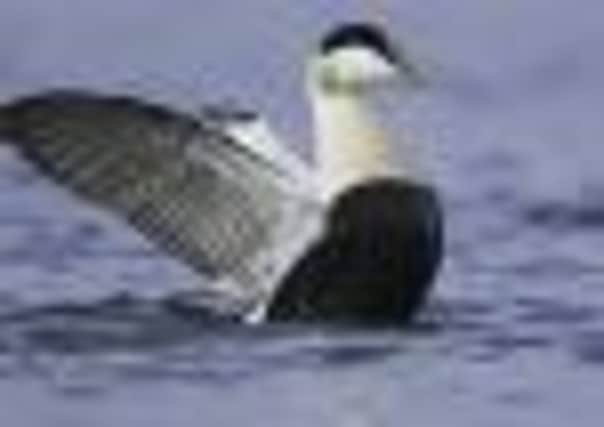Outdoors: The Eider Drake


Anthropomorphism is frowned upon by wildlife purists, but the courtship call of the drake eider sounds so similar to that of a non-politically correct man uttering an appreciative “coo-or” or “ah-hoo” towards an attractive woman that it never fails to make me smile.
As they call, the amorous drakes throw back their heads in noisy admiration of the females bobbing up and down in among them in the coastal shallows, and for me it is one of the quintessential sounds of a Scottish spring down by the shore, stirring happy memories of hot, sunny days with the excitable calls of screeching terns as a backdrop as they too sought mates.
Advertisement
Hide AdThe eider is sometimes known as St Cuthbert’s duck because Northumberland’s patron saint was said to have introduced laws in the 7th century to protect the duck on the Farne Islands, and in the west of Scotland as the Colonsay duck, due to the large numbers found on this Hebridean island in the late 1800s.
From the earliest of times, eiderdown was a valuable resource and archaeologists have even found evidence of its use dating back to the Stone Age. Although synthetic alternatives or domestic goose feathers have now largely taken over, eiderdown is still much sought after today as superb insulation filler for bedding and clothing, and harvesting continues in places such as Iceland where it is collected from nests towards the end of the breeding period without disturbing the birds.
There doesn’t appear to be a large amount of documented evidence, but it seems likely that a much less sustainable approach was adopted in many parts of Scotland in the past, with the down, eggs and perhaps even the duck all being swiped from the nest at the same time. Certainly, from as recently as the 1860s, there are records of eider eggs being sent from Islay to Glasgow poulterers. However, in the last 150 years or so, probably as a result of reduced persecution, eider numbers have increased in spectacular style, making it now our commonest and most familiar sea duck.
Cryptically plumaged, the female bird relies on her mottled-brown camouflage to avoid detection and thus sits very tightly on her nest. In some places, eiders nest at very high densities and I recall on a visit to one of the islands in the Firth of Forth literally stumbling upon a nest every few yards, the females erupting at my feet in a series of heart-stopping explosions as they took to the air. It was a bit like treading through a minefield and I soon beat a hasty retreat to avoid any further disturbance.
Interestingly, these female birds would almost always squirt a dollop of foul-smelling poo over their eggs as they took flight. I have never found any references to this habit in bird texts, and while it may just be an unavoidable consequence of spending a long time on the nest, I do suspect a last-ditch ploy to deter a predator from eating her eggs. If you ever do inadvertently flush an incubating eider, always cover her eggs with the soft down lining of the nest so as to keep them warm until she returns and keep them out of sight of scavenging gulls.
Indeed, gulls are the bane of breeding eiders and they can take a terrible toll once the ducklings have hatched. During the tumultuous time when the fluffy ducklings first take to the sea, they are harried relentlessly by herring and lesser black-back gulls, as well as crows. Several female eiders may herd their young together to form large protective creches, with the group presence of adults providing a good strategy to detect and drive away marauding gulls. This creche-forming behaviour may also have evolved so parent eiders can leave their young on a rotational basis in order to feed on their main staple of mussels and crabs and recover weight lost during the long incubation period.
Advertisement
Hide AdThis devotion to looking after the eggs is well illustrated by a delightful record from the early 20th century of a captive female eider that sat for 28 days without ever leaving the nest, so that by the time hatching was drawing close the duck was “buried overhead, nest and all, in a mass of luxuriant chickweed” that had grown over her in the meantime.